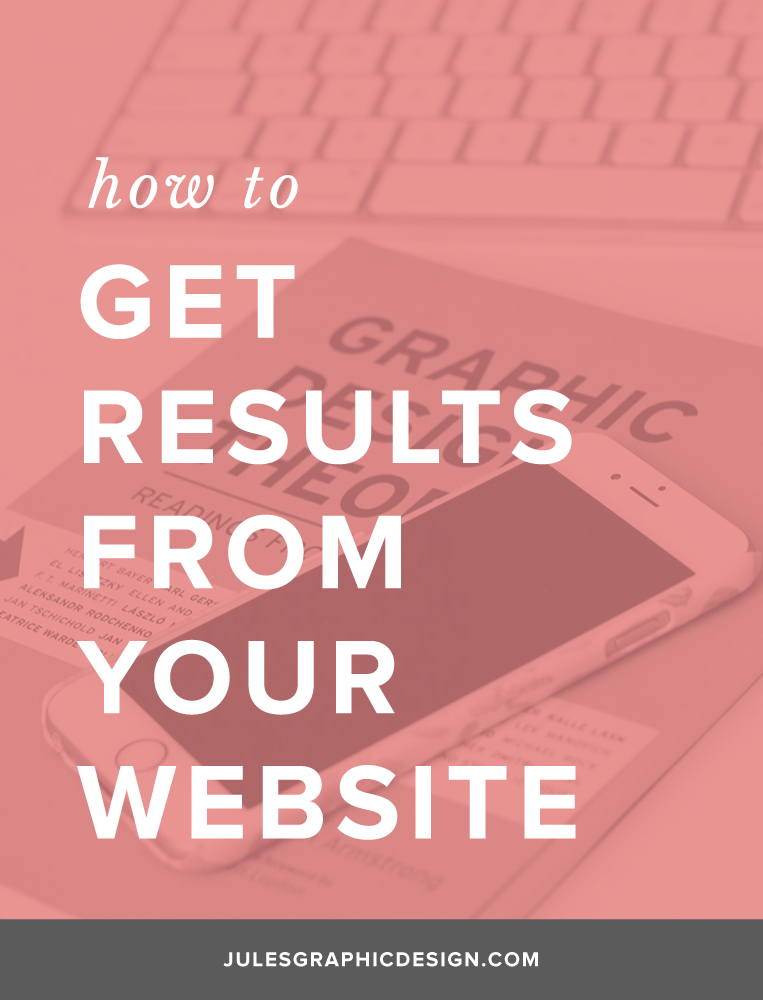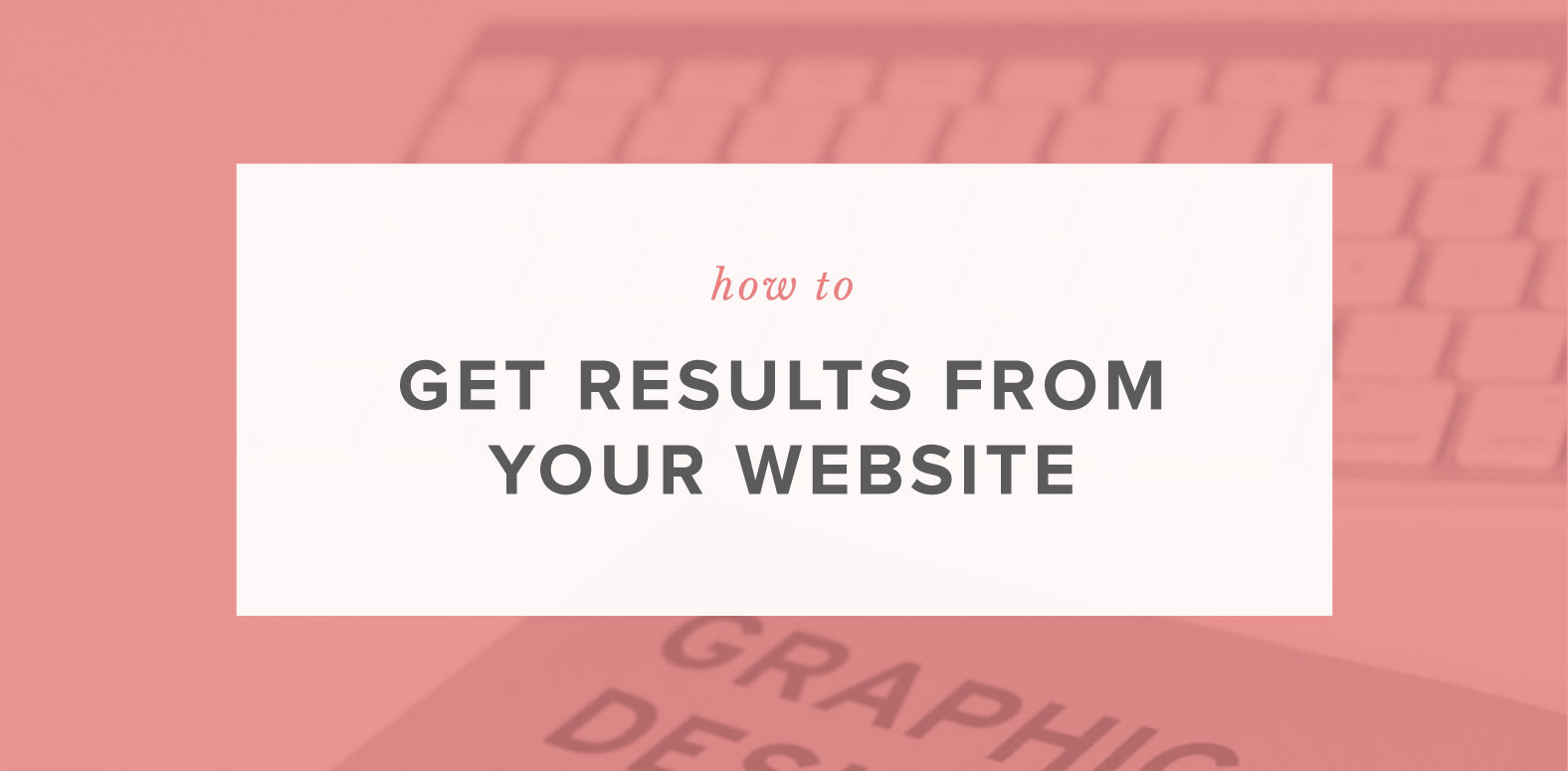Today, I’m sharing a few questions that you should ask yourself before creating a new website design. Taking the time to consider these things, will mean that your site is built based upon your goals and that it, ultimately, gets you the results that you want! Which, is something that we can all get behind. Am I right?!
These are all questions that I ask my clients during our initial project meeting because it’s so important to establish the strategy behind a website before getting into the nitty-gritty design details.
Whether you’re working with a designer or going the DIY route, these are all things that everyone should consider before starting their website design or redesign.

Who is your Niche?
If you haven’t already, think about who you want your website to target. Usually, when I’m working with a client, they have a pretty good idea of who their niche is, in a broader sense, but haven’t thought about who this person is on a deeper level.
For instance, a certain fashion blogger might know that her target audience is women 20-35 who like the Boho style. But, if you take the time to narrow this audience down to just one person, you can target all of your messaging and design towards this specific person, making your message much more clear and effective.
Start thinking about what this person likes to do in their spare time. Why are they reading your blog? What value do they get from it? Why does this person love to come back to read more? Using our fashion blogger example, you might end up with a person like this:
Valerie is a 25-year-old female who is outgoing and carefree. She loves the Boho fashion style but puts her own twist on it. She works hard, but doesn’t live to work, by any means. She likes to spend most of her free time outdoors, taking walks with her dog or doing yoga at her local studio. She also attends concerts with her friends and almost always says YES to last minute events. She is inspired by the outfits on my blog and trusts my fashion advice. Because of this, she is a religious reader of my blog and is an engaged follower on social media.
Now, you have narrowed your niche down to one person who you can speak to directly. Is every single one of you fans going to be exactly like this person? No. But, if they are the right fit for your brand, then they will resonate with this individual on some level. This process is all about finding your ideal reader and attracting them.
Establishing your niche is an essential step in the process because all design and copy decisions should be based off of who you want your website to reach. When I’m working with someone new, I go through this exercise with them, to make sure that we hone in on their niche. This process allows me to design an effective website and helps my client to create messaging that attracts the right people.
What is your offering?
You probably already know what services or products you will be offering, but have you really thought about how you’re going to package it all together? If you’re a service-based business, do you want to offer all of your services individually or package them up into one or two options? What are you going to call these packages? What is the price going to be? How long will it take you to deliver? Do you want to include all of this information on your website? Or, ask that people contact you to learn more?
If you’re a product-based business, what categories will you need to divide your products into? For example, if you’re selling baby cloths you might want to divide things up by size/age or by type (shirt, pants, etc.). Think about how you want to group things to make your customers shopping experience effortless.
If you’re working with me, then I will help you to make some of these decisions during our strategy session. These questions are important to ask, when building an effective site, because they will guide your messaging and calls to action. If you know what you want to offer and why it’s of value to your audience, then you will be in good shape during the design process.
What is your goal for the website?
For most, the goal should be to attract your niche and convert interest into sales. But, take a little time and think about how you can do that. You might get a few clients who stubble upon your website and immediately contact you to book your service. Most of the time though, a potential client will want to get to know you more first. This is where establishing TRUST comes into play.
The best ways to build trust are for the user to get to know the person behind the brand (aka. You) and to giveaway valuable information for free. So, what kinds of offerings are you going to give to your audience to build trust? Are you going to blog and spread your knowledge to others? Do you want to send out newsletters with valuable information? Whatever it is, that should be the call to action that is used throughout your website. For example, if you want people to join your email list, then include a free PDF that users can download if they opt-in to your list.
Don’t get me wrong; you should certainly include CTA for users to contact you. However, this should be done on interior pages where your audience has already gotten to know you a little bit. For instance, the about page & services page are great places to include a CTA to reach out for more information. On your homepage, your customer isn’t ready to buy from you – they are just getting to know you, after all. Instead, direct them to the places where they can get to know you and what you offer. Building trust and showing your value on multiple platforms is the most effective way to build a digital presence.
Create Compelling Copy
Now that you have a better idea of who your audience is and what you are offering, you can start working on the copy for your website. Think about what kind of voice would be best to target your audience. Do you want to have a more casual tone or does you audience respond better to a more professional approach?
In general, I find it helps to bring your own unique voice into your copy because, this allows people to get to know you. It also insures that you come across as the genuine person, that you are, and never sound too sales pitchy. Make sure that you write things the way that you would say them, to insure that your voice is coming through. This is especially true, on your blog and on social media, where you can discuss any topic you want and can be a little more casual.
When creating copy, consider what kinds of messaging should go on each page. Your homepage, for instance, should give an overview of what you do and how you can help your niche. It should also guide the viewer to other pages on your website, so that they can learn more about you and your services. If you’re trying to get people to opt-in to your newsletter, this is the place to add that information, front and center.
Also think about where your traffic comes from. Do most people find you on Pinterest and click into a blog post? Then it might be helpful to include your opt-ins on your blog pages or provide a quick link to your about page so that users can learn more about you. Wherever you send them, just make sure that you’re guiding them throughout your website with intention.
What kind of imagery are you going to use?
If you’re working with a designer on your brand identity, then this was probably a part of the design process (at least, it’s a part of my process). After branding is complete, I provide examples of what your imagery should look like, so that it all fits in with your new brand identity.
If you’re going the DIY route, then make sure that you think about what kinds of images fit in with your brand. Does your niche respond best to dark, moody images, or something that is light and bright? Do you want the images to include pops of a particular color? Or, should they remain neutral and minimalistic?
Take some time to look at images online to find a certain style that inspires you. If you want to take your own photos or are planning to hire a photographer, then use the photos that you have gathered online as a guide. You could also purchase stock photos that fit in with the brand imagery that you’ve chosen. As long as all of your imagery has a consistent look and feel, then you will be on the right track to branding your images.
What platform are you going to use to build your site?
This one really depends on what kind of business you have and if you want to work with a designer. The platform that I use for the majority of websites that I build is WordPress. I choose to use this platform because it allows me to offer completely customized designs for my clients. I don’t use pre-made themes, but rather, create a unique design and then code it, from scratch.
If you want to build a website yourself, then I recommend using Squarespace instead of WordPress. WordPress does have some great premium themes, but I often find that they are a little difficult to use, right out of the box. Most of these themes come with SO many bells and whistles, which often end up slowing down the speed of your site. For this reason, I prefer the simplicity of Squarespace for DIY websites. Choose a theme that you like and customize it from there. You can always hire a designer/developer to make customizations to the CSS for you.
Now, this is just a general overview of these two platforms. If you’re not sure which option is best for you, then reach out to me! I design and develop websites on all sorts of platforms and can tell you which option is best for your unique site.
And there you have it! A few questions to ask yourself before creating your website design or re-design. I promise, taking the time to establish a stagey for your digital presence will make all the difference and will allow you to really target your audience.
You only get one homepage. Let’s make it work harder. Get a free expert review of your homepage, so it actually attracts your dream clients!
Free Homepage Health Check
Previous Post
next Post
Copyright 2022 - All Rights Reserved | Website made by Jules Design (of course!)
Terms & Conditions
Privacy Policy
We are a Richmond Virginia based website design and brand identity design studio for dietitians, nutritionists, health coaches, fitness professionals and wellness entrepreneurs. We love working with brands that care.
